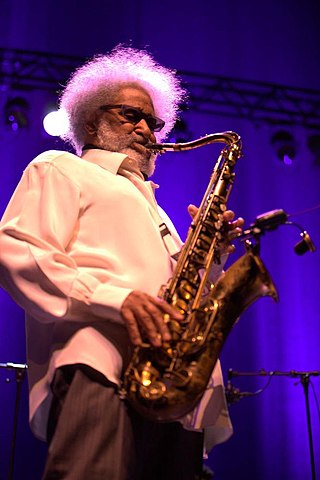
Walter Theodore "Sonny" Rollins is an American jazz tenor saxophonist who is widely recognized as one of the most important and influential jazz musicians. In a seven-decade career, he has recorded over sixty albums as a leader. A number of his compositions, including "St. Thomas", "Oleo", "Doxy", and "Airegin", have become jazz standards. Rollins has been called "the greatest living improviser".

Henry "Hank" Mobley was an American hard bop and soul jazz tenor saxophonist and composer. Mobley was described by Leonard Feather as the "middleweight champion of the tenor saxophone", a metaphor used to describe his tone, that was neither as aggressive as John Coltrane nor as mellow as Lester Young, and his style that was laid-back, subtle and melodic, especially in contrast with players like Coltrane and Sonny Rollins. The critic Stacia Proefrock claimed him "one of the most underrated musicians of the bop era." Mobley's compositions included "Double Exposure," "Soul Station", and "Dig Dis," among others.

Paul Laurence Dunbar Chambers Jr. was an American jazz double bassist. A fixture of rhythm sections during the 1950s and 1960s, he has become one of the most widely-known jazz bassists of the hard bop era. He was also known for his bowed solos. Chambers recorded about a dozen albums as a leader or co-leader, and over 100 more as a sideman, especially as the anchor of trumpeter Miles Davis's "first great quintet" (1955–63) and with pianist Wynton Kelly (1963–68).

Edward Hammond Boatner Jr., known professionally as Sonny Stitt, was an American jazz saxophonist of the bebop/hard bop idiom. Known for his warm tone, he was one of the best-documented saxophonists of his generation, recording more than 100 albums. He was nicknamed the "Lone Wolf" by jazz critic Dan Morgenstern because of his tendency to rarely work with the same musicians for long despite his relentless touring and devotion to jazz. Stitt was sometimes viewed as a Charlie Parker mimic, especially earlier in his career, but gradually came to develop his own sound and style, particularly when performing on tenor saxophone and even occasionally baritone saxophone.
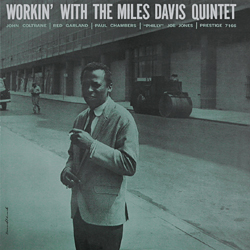
Workin' with the Miles Davis Quintet is a studio album by the Miles Davis quintet recorded in 1956 and released circa January 1960. Two sessions on May 11, 1956, and October 26 in the same year resulted in four albums—this one, Relaxin' with the Miles Davis Quintet, Steamin' with the Miles Davis Quintet and Cookin' with the Miles Davis Quintet.

Milestones is a studio album by American jazz trumpeter, bandleader, and composer Miles Davis. It was recorded with his "first great quintet" augmented as a sextet and released in 1958 by Columbia Records.

Someday My Prince Will Come is the seventh studio album by Miles Davis for Columbia Records, catalogue CL 1656 and CS 8456 in stereo, released in 1961. Recorded at Columbia's 30th Street Studio in Manhattan, New York City, it marked the only Miles Davis Quintet studio recording session to feature saxophonist Hank Mobley.

Miles Davis and Milt Jackson Quintet/Sextet, also known as Quintet/Sextet is a studio album by trumpeter Miles Davis and vibraphonist Milt Jackson released by Prestige Records in August of 1956. It was recorded on August 5, 1955. Credited to "Miles Davis and Milt Jackson", this was an "all-star" session, and did not feature any of the members of Davis's working group of that time. Alto saxophonist Jackie McLean appears on his own compositions “Dr. Jackle” and “Minor Apprehension”.

Soul Station is an album by jazz saxophonist Hank Mobley that was released in 1960 by Blue Note Records. It is considered by many critics to be his finest album.
"Airegin" is a jazz standard composed by American jazz saxophonist Sonny Rollins in 1954. Rollins chose the name "Airegin", as it is an anadrome of "Nigeria".

Coltrane Jazz is the sixth studio album by jazz musician John Coltrane. It was released in early 1961 on Atlantic Records. Most of the album features Coltrane playing with his former Miles Davis bandmates, pianist Wynton Kelly, bassist Paul Chambers and drummer Jimmy Cobb during two sessions in November and December, 1959. The exception is the track "Village Blues", which was recorded October 21, 1960. "Village Blues" comes from the first recording session featuring Coltrane playing with pianist McCoy Tyner and drummer Elvin Jones, who toured and recorded with Coltrane as part of his celebrated "classic quartet" from 1960 to 1965.
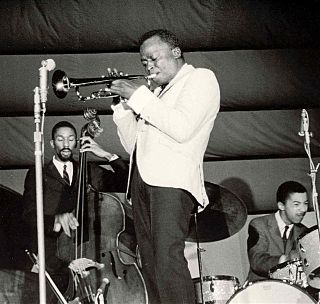
The Miles Davis Quintet was an American jazz band from 1955 to early 1969 led by Miles Davis. The quintet underwent frequent personnel changes toward its metamorphosis into a different ensemble in 1969. Most references pertain to two distinct and relatively stable bands: the First Great Quintet from 1955 to 1959, and the Second Great Quintet from late 1964 to early 1969, Davis being the only constant throughout.

Collectors' Items is a 1956 studio album by Miles Davis. There are two sessions collected on the album with largely different musicians. The first 1953 session is "Compulsion", "The Serpent's Tooth" and "'Round About Midnight". The second 1956 session is "In Your Own Sweet Way", "Vierd Blues" and "No Line". The personnel for the first session were Davis, Sonny Rollins and Charlie Parker on tenor sax, Walter Bishop on piano, Percy Heath on bass and Philly Joe Jones on drums. For the second session, the tenor sax was Rollins alone, the piano was Tommy Flanagan, the bass Paul Chambers and Art Taylor on drums.

Sonny Rollins Plus 4 is a jazz album by Sonny Rollins, released in 1956 on Prestige Records. On this album Rollins plays with the Clifford Brown/Max Roach Quintet. The album was the last recording including pianist Richie Powell and Brown, as both died in a car accident three months later.

Nucleus is an album by jazz saxophonist Sonny Rollins, released on the Milestone label in 1975, featuring performances by Rollins with George Duke, Raul de Souza, Bennie Maupin, Chuck Rainey, Eddie Moore, Mtume, Bob Cranshaw and Roy McCurdy. It was recorded at Fantasy Studios, Berkeley, CA, on September 2–5, 1975.
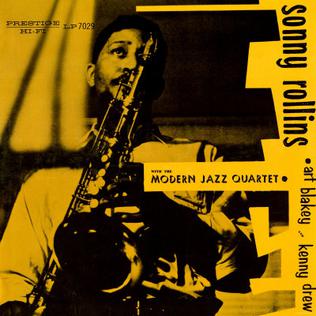
Sonny Rollins with the Modern Jazz Quartet is a 1956 compilation album by jazz saxophonist Sonny Rollins, featuring his earliest recordings for the Prestige label under his leadership, including four tracks performed by Rollins with the Modern Jazz Quartet, eight tracks where Kenny Drew and Art Blakey replace Lewis, Jackson, and Clarke, and one track with Miles Davis on piano.

Moving Out is an album by jazz saxophonist Sonny Rollins. This was his second for Prestige Records, featuring Kenny Dorham, Elmo Hope, Percy Heath, and Art Blakey, and one track with Thelonious Monk, Tommy Potter, and Art Taylor. The first 4 tracks had originally appeared on as the 10-inch LP Sonny Rollins Quintet Featuring Kenny Dorham, and the final track had appeared on the 10-inch LP Sonny Rollins and Thelonious Monk.
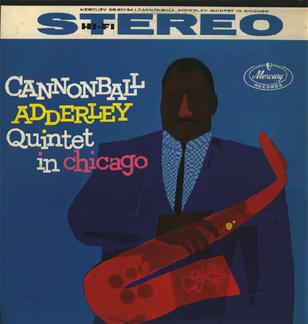
Cannonball Adderley Quintet in Chicago is an album by jazz saxophonist Cannonball Adderley, his final release on the Mercury label, featuring performances by Adderley with John Coltrane, Wynton Kelly, Paul Chambers and Jimmy Cobb.
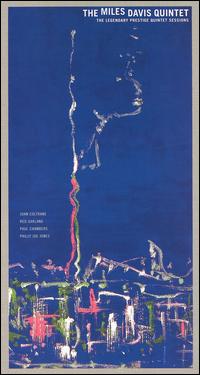
The Legendary Prestige Quintet Sessions is a four compact disc box set of recordings by the Miles Davis Quintet released in 2006 by the Concord Music Group. It collates on three discs the entire set of recordings that made up the Prestige Records albums released from 1956 through 1961 — Miles, Cookin', Relaxin', Workin', and Steamin'. The track "'Round Midnight" was released on the album Miles Davis and the Modern Jazz Giants. The fourth disc contains live material from a television broadcast and in jazz club settings. It peaked at #15 on the Billboard jazz album chart, and was reissued on December 2, 2016, in a smaller compact disc brick packaging.

Chambers' Music is the debut album by jazz bassist Paul Chambers. It was released in September 1956 on the Jazz West label. It features Chambers with his Miles Davis bandmates, tenor saxophonist John Coltrane and drummer Philly Joe Jones, along with pianist Kenny Drew, and baritone saxophonist Pepper Adams and trombonist Curtis Fuller on three tracks.



















